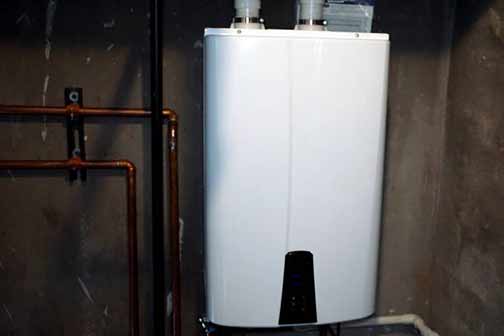
Adding a tankless water heater to your home is an excellent way to improve the efficiency of your hot water supply systems, says Yourway Properties. Tankless water heaters produce hot water on demand. Since they do not need to run constantly to produce hot water, they are very energy-efficient.
Their compact design also means you can install them where you could not install a traditional water heater. A third benefit of tankless water heaters is they never run out of hot water, as long as you buy the right size for your home and the unit is installed correctly.
However, because a tankless water heater is a precision device, it is quite sensitive to problems in its components. Small changes in the way the system is supposed to work can have major impacts on the overall performance of your tankless water heater.
This is why it is important to know the telltale signs of problems in a tankless water heater. Being able to detect the early signs of malfunction and fix the issues before they get worse is essential if you want to avoid water heater emergencies in your home.
What are the typical warning signs that a tankless water heater is in trouble?
6 signs of problems in a tankless water heater
Low water pressure
Low water pressure in the hot water line may be due to blockages or leaks. The buildup is a common problem in the intake and outtake lines of a tankless water heater. That problem is worse in areas where the water is hard. Slow sediment buildup inside the lines can narrow pipe channels and impair their ability to supply water. Low water pressure can also result from leaks in the hot water lines. A third possibility is problems at the local water company.
Lukewarm water
There are three main reasons why a tankless water heater will produce lukewarm water. It could be due to mineral buildup on the heat exchanger; this will impair the device’s ability to heat water. Descaling the water heater will fix this problem. A tankless water heater will also produce lukewarm water if the gas burners are dysfunctional. The third reason for this problem is inadequate gas supply to the burner. An experienced water heater technician can help you pinpoint the exact cause of the problem.
Water temperature fluctuations
This is when water from the water heater is first warm, then turns cold, before getting hot again. Possible causes of the problem are a worn-out flow sensor or a plumbing crossover that allows hot and cold water to mix. The third and most common cause of this problem is a cold water sandwich, which is not a big deal. Temperature fluctuations due to a cold water sandwich can be solved by not stepping into the shower immediately after you turn on the hot water.
The water heater keeps shutting off
Your tankless water heater has a safety device that shuts the system to prevent damage if it senses a major issue. This could be why your tankless water heater keeps shutting off. Common problems that trigger this shut-down mechanism include a clogged whole-house filter connected to the water heater, a loose wire in the system, low water flow rate (the water heater is not getting enough water) and problems with the unit’s gas or electricity supply.
The gas burner is not igniting
If its gas burners won’t ignite, your tankless water heater cannot heat water. A fairly common reason for this problem is an empty propane tank. It could also be because the gas valve is not fully opened. If opening the gas valve does not solve the problem, there is a chance that the ignition pack has failed. This problem could also be due to issues with the ventilation system or excessive condensation could be putting out the flame. A professional plumber can determine the exact cause of the problem.
Noisy burners
This is often due to debris that is sticking to the fan. A leak in the sealed combustion chamber can also interfere with combustion, resulting in strange noises. If the system is not venting properly, it can cause weird sounds from your tankless water heater. Another issue that causes worrisome sounds from a tankless water heater is the mineral buildup on the components of the water heater. To eliminate the probable causes of this problem and detect the root cause, you will need a licensed water heater repair service.
Now that you know why your tankless water heater is having issues, what is the next step?
Most water heaters that are tankless have problems can easily be fixed by a professional technician. But you may also have to replace the water heater if the issues are too far gone to be repaired or the water heater is too small for your home.
To ascertain the exact next steps to fix your tankless water heater problems, you may want to talk to a professional plumber.


















